2019 Meetings
The linked titles of some meetings are the presentations speakers provided.
December 03, 2019: " Advanced Antenna Measurement Techniques Using Time Domain Transformation " Zhong Chen, ETS-Lindgren
Abstract: Time domain gating is an effective technique to remove reflections in antenna measurements. The vector frequency response is transformed to time domain via inverse Fourier transforms, and a time domain gate can be applied. This function is included in commercial vector network analyzers. Although its applications seem straightforward, the implementations and limitations can feel like a “black-box”. We provide an “under-the-hood” review of this popular function, and explain the nuances in the time domain gating applications which can affect the measurement uncertainties. This presentation strives to provide an in-depth understanding of the time domain-gating algorithm. Topics discussed include aliases, resolution, typical EMC antenna time signatures, window functions, and time domain gate shapes, etc. We then discuss the gating band edge errors (or “edge effects”), mitigation techniques and the limitations of the post-gate renormalization method used in a VNA. We introduce an alternative edge mitigation method, which improves the accuracy for many antenna measurement applications. A live demonstration showing “real world” measurements will follow the presentation.
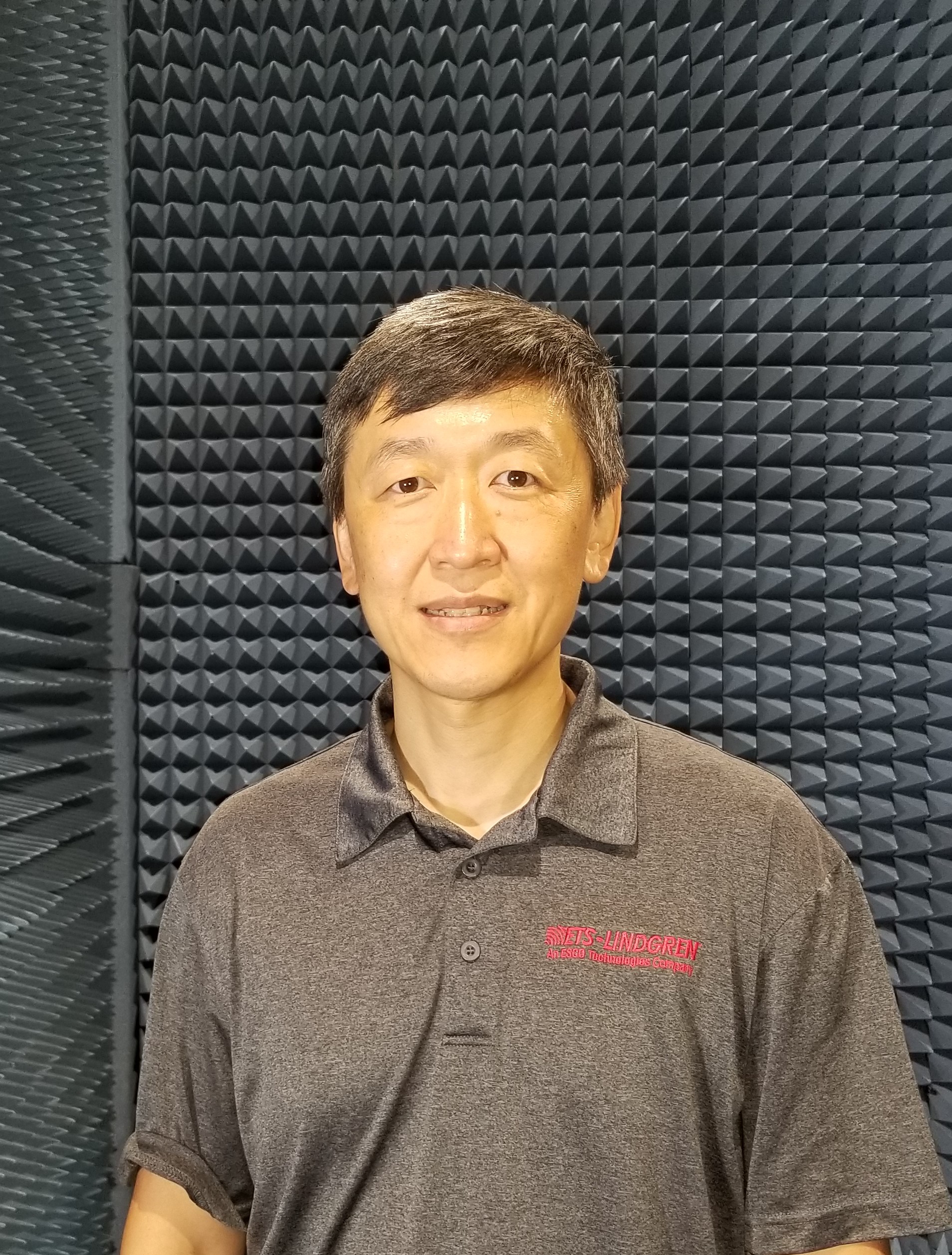
Bio: Zhong Chen is the Director of RF Engineering at ETS-Lindgren, located in Cedar Park, Texas. He has over 25 years of experience in RF testing, anechoic chamber design, as well as EMC antenna and field probe design and measurements. He is an active member of the ANSI ASC C63® committee and Chairman of Subcommittee 1 which is responsible for the antenna calibration and chamber/test site validation standards. He is chairman of the IEEE Standard 1309 committee responsible for developing calibration standards for field probes, and IEEE Standard 1128 for absorber measurements. His research interests include measurement uncertainty, time domain measurements for site validation and antenna calibration, and development of novel RF absorber materials. Zhong Chen received his M.S.E.E. degree in electromagnetics from the Ohio State University at Columbus. He may be reached at zhong.chen@ets-lindgren.com.
`October 3, 2019 : IEEE SCV-EMC 2019 Mini Symposium
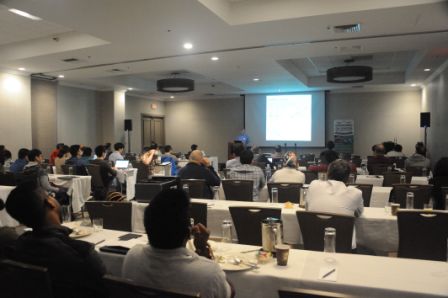
Abstract:
" Pre-Layout Power Integrity through Systematic Physics-Based Design" Dr. Jim Drewniak
Power integrity in high-speed digital designs is among the significant design challenges for high data rate and high speed systems. Best engineering practices for design of a power distribution network at the package and PCB level are well known. In practice this comes down to minimizing inductance over the current-draw path. However, there are many subtle design choices that can impact achieving a minimal power net voltage ripple or meeting a target impedance specification. In order to achieve a best design with or without constraints on some of these choices, a proven methodology for calculating the portions of inductance associated with particular geometry features is necessary, and a knowledge of inductance physics that can be exploited to achieve the design specification within a given stackup and a minimal number of decoupling capacitors. A systematic methodology has been developed for PDN design and PI analysis that can readily identify a best design given typical design constraints. A method for PDN impedance calculation will be shown, and an approach for achieving a target impedance will be given. If the target impedance specification is not met, the developed methodology can be used to immediately identify if specifications can be met with design modifications within the constraints, and provide directions in doing so in one or two iterations while avoiding trial-and-error simulations.
" Locate ESD events using the speed of light!" Doug Smith
Tracking down the sources of ESD problems in equipment can be difficult in modern electronic designs. After a brief overview of the characteristics of ESD and its effects on equipment, simple and effective troubleshooting techniques will be discussed that Mr. Smith has developed over many years of solving ESD problems. Live demonstrations will be used to illustrate some of the techniques and attendees are encouraged to participate.
"Electromagnetics Made Simple – Maxwell Without the Math" Mark Montrose
This brief tutorial examines Maxwell’s equations in a visual manner for those who never studied electromagnetic theory in college, or forgot everything years later. Engineers need to understand what the equations tell us without the need to solve complex math that provides minimal or no value to a practitioner who has to solve problems in real-time. It is easy to convert these four equations to simple algebra that allows one to visually detect where and where an EMC event may occur within a printed circuit board design and layout without the need for complex simulation. We convert the field of frequency domain analysis to the time domain as it applies to transmission line theory. How common-mode energy is created will be presented in a simplified, unique manner.
"Findings on Radiated Susceptibility ABT (Audio Breakthrough)" Sandeep Chandra
Audio Breakthrough (ABT) testing of mobile phones for conducted and radiated susceptibility is well known problem. The problem has shifted from phones to audio dongles over the years and it can be addressed through good filter design at PCB level. However, there are many subtle test conditions that a typical test lab can get it wrong during calibration of the test and during the test itself. This talk explores several variables and scenarios in test conditions, that could lead to false positives/negatives. Debugging a RI- ABT failure inside a chamber is a difficult and time consuming approach. A systematic bench-level approach method will be presented for debugging radiated immunity ABT. This bench level approach will be validated with actual chamber measurements.
"New Set of EMC Challenges in Telecommunication Equipment" Philippe Sochoux & Alpesh Bhobe
Interface speeds, densities and power continue to increase and present new sets of EMC challenges, both immunity and emissions, in Telecommunications Equipment. In this presentation we will give an overview of these challenges and how they are being mitigated. Topics will include predictive scaling to minimize early prototype quantities, how to minimize differences in conducted emission results from PSU bench level testing between various suppliers, a novel statistics-based approach to pre-test high speed optics for Radiated Emission, as well as other topics and novel solutions that can benefit the overall system design for EMC

Bio: Dr. James Drewniak (S¹85M¹90SM¹01F¹07) received the B.S., M.S., and Ph.D. degrees in electrical engineering from the University of Illinois, Urbana-Champaign, in 1985, 1987, and 1991,respectively. In 1991, he joined the Department of Electrical Engineering, Missouri University of Science and Technology (MS&T; formerly known as the University of Missouri-Rolla), Rolla, where he is currently a Faculty Member in the EMC Laboratory. His research and teaching interests include electromagnetic compatibility in high-speed digital and mixed-signal designs, signal and power integrity, electronic packaging, electromagnetic compatibility in power electronic based systems, electronics, and antenna design.
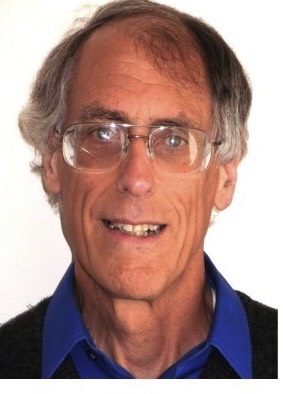
Doug Smith held an FCC First Class Radiotelephone license by age 16 and a General Class amateur radio license at age 12. He received a B.E.E.E. degree from Vanderbilt University in 1969 and an M.S.E.E. degree from the California Institute of Technology in 1970. In 1970, he joined AT&T Bell Laboratories as a Member of Technical Staff. He retired in 1996 as a Distinguished Member of Technical Staff. From February 1996 to April 2000 he was Manager of EMC Development and Test at Auspex Systems in Santa Clara, CA. Mr. Smith currently is an independent consultant specializing in high frequency measurements, circuit/system design and verification, switching power supply noise and specifications, EMC, and immunity to transient noise. He is a Senior Member of the IEEE and a former member of the IEEE EMC Society Board of Directors.

Mark Montrose is principle consultant of Montrose Compliance Services with 39 years’ experience in applied electromagnetic compatibility design, testing, troubleshooting and certification. He is a long-term past board member of the IEEE EMC Society, a past Division Director for the IEEE Board of Directors and teaches for UC Santa Cruz Extension. He has authored 5 popular engineering textbooks, his most recent being “EMC Made Simple-Printed Circuit Board and System Design”.
Sandeep Chandra received his M.S in Electrical Engineering from the University of Missouri-Rolla in 2007. He joined Ford Motor Company in 2007 and worked as a Electromagnetics Research Engineer for 8 years. He joined Google in 2016 as EMC Design Engineer. At Google he worked on several Google X projects and consumer electronic devices. He is currently EMC lead for Pixel phones at Google. His interests include electromagnetics and EMC.
Philippe Sochoux received his B.S. and M.S. degrees in electrical engineering from Marquette University, Milwaukee WI in 1990 and 1994, respectively. In 2014, he joined Juniper Networks where he is currently a Sr. Manager in EMC Design. Prior to joining Juniper, he managed functions including EMC, MDVT, ODVT, Safety, NEBS and Signal Integrity at Cisco Systems.
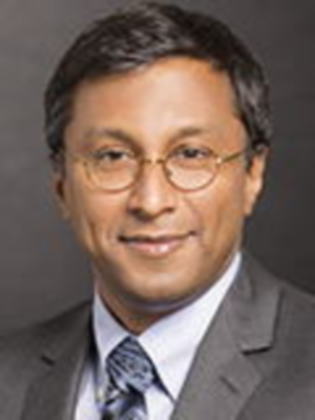
Alpesh Bhobe is a Sr. Manager/Sr. Technical Leader of Design for EMC/RF/OTA at Cisco Systems in San Jose, CA. He received his Ph.D. in Electrical Engineering from the University of Colorado at Boulder, Colorado in 2003. He was a Post-Doc at NIST in Boulder, Colorado from 2003-2005. While at the University of Colorado and at NIST his research interest included the development of FDTD and FEM code for EM and Microwave applications as well as in SI and EMC.
`
September 10, 2019: " Best Measurements Practices for Power Rails: The good, the bad and the ugly" Dr. Eric Bogatin
Abstract: Switch mode power supplies (SMPS) proliferate in all power systems because they can be very efficient as DC to DC converters. But they can be notoriously noisy, both as a DC power source and as a source of EMI. Separating their voltage rail noise from near field radiated emissions is hard and often introduces artifacts that lead to misinterpretation of the root cause of noise. Through live demos, we’ll look at the right ways to measure power rail noise to avoid some of these artifacts.

Bio: Dr. Eric Bogatin received his BS degree in physics from MIT, and MS and PhD degrees in physics from the University of Arizona in Tucson . He has held senior engineering and management positions at Bell Labs, Raychem, Sun Microsystems, Ansoft, and Interconnect Devices. Eric has written five books on signal integrity and interconnect design and over 300 papers. His sixth book is a science fiction novel, Shadow Engineer, available on Amazon.com. Eric is currently a signal integrity evangelist with Teledyne LeCroy, which specializes in signal integrity training and education. He is a distinguished lecturer for the IEEE EMC society and lectures worldwide on signal integrity topics.
`May 7, 2019: " Navigating Compliance in the BRIC Marketplace" Mark Maynard
Abstract: The consumer markets in Brazil, Russia, India and China (BRIC) now are responsible for a sizable portion of the profits for most global companies. Working against this prize is a formidable maze of culture, laws, and overlapping regulations, causing confusion surrounding the regulatory requirements. If you are considering entering the BRIC marketplace with your electrical and electronic products, you need knowledge of how to obtain the necessary regulatory approvals for EMC, telecom, and product safety. Whether your product is for telecommunications, computing, wireless, consumer electronics, or household appliances, you will face some distinct and unique obstacles, for which you need to be prepared. Distance, language, unfamiliar culture, and developing market conditions can make this a difficult and expensive procedure for the uninformed. Come to this presentation so you can gain some insight into the processes, and learn sources of information and allies to help you navigate a safe path to compliance.
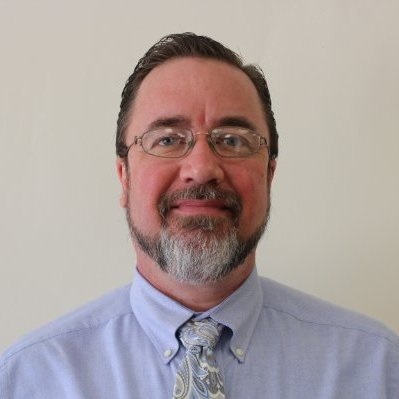
Bio: Mark Maynard has over 25 years of experience in compliance engineering, in the areas of EMC/EMI, wireless/telecom, product safety, environmental, and quality management systems. He also served as the President-Elect for the IEEE Product Safety Engineering Society, and was the Exhibitions Chair for the 2017 IEEE EMC Symposium. Mark can be reached at mmaynard@ieee.org
April 16, 2019: " Interference between RF Device Modeling and Best Practices for using CAD Information in 3D Simulation of Electromagnetic Effects " Timothy McDonald & Matt Miller
Abstract: Interference between RF devices is one of the biggest challenges in designing and maintaining commercial and defense systems. These systems include ships, airplanes, drones, cell phones, satellites, automobiles and generally, anything that has RF systems installed in or on it. The problem is complex for a number of reasons including the broadband nature of the interference, the lack of detailed performance data, introduction of intermodulation products when multiple systems interact with one another and a host of other reasons. Identifying and solving cosite interference issues early in a design is critical as discovering an interference problem right before bringing a product to market or after it has been put into service can cost millions of dollars to fix the problem and lost revenue. One only has to perform a web search for “cosite interference” to see a sample of the issues that have plagued military and commercial programs for decades. In this talk, we will discuss the analysis capabilities and approach that EMA employs to predict and mitigate RF cosite interference problems for our customers. Today, EM engineers must use 3D geometry in a practical way in their work without letting the complexity of handling the full CAD overwhelm their design cycles. EM effects teams must do more in an increasingly shorter period, while being required to work on models traceable to the master CAD. As the ability to model ever-larger scenarios with 3D computational electromagnetic (CEM) codes emerges as a possibility, the main limitation is preparing the geometrical models received from mechanical drawings in PLM systems in a timely manner. This talk will talk about best practices to develop EM models that can have an impact on product design in EM effects. We will discuss common scenarios for aircraft, spacecraft and automobiles and how modern EM effects teams can leverage simulation to reduce the design cycle and achieve product validation.
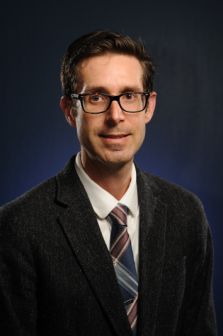
Bio: Tim McDonald, PhD is chief scientist at Electro Magnetic Applications where he has implemented new system-modeling approaches to simulate the interaction of systems and their electronics with electromagnetic environments in a shorter time, with more accuracy, and at a lower cost. He is a consultant to NASA and DoD major primes for specialty engineering of critical systems, development of novel materials solutions to EMI/EMC problems, and in the execution of major programs that require verification to electromagnetic environmental effects.
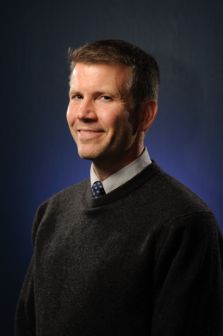
Bio: Matt Miller is a Senior Scientist at Electro Magnetic Applications (EMA) where he leads a group providing analysis services for cosite interference, installed antenna performance and radar signature prediction. Mr. Miller has over 20 years of experience in electromagnetics, business development, marketing and sales. In 2005, Mr. Miller co-founded Delcross Technologies, LLC where he served as the President. Delcross developed commercial simulation tools for cosite interference, installed antenna performance and radar signature prediction. In 2015, Delcross was sold to ANSYS, Inc.
March 12, 2019: " Automated Design Rule Check for EMC Design" Federico Centola
Abstract: The EMC design of PCBs often requires board reviews and inspections to insure that EMC guidelines are followed and that are no major EMC design violations. This review process is very often a manual process, time consuming and prone to errors especially when large PCB with multiple layers have to be examined. Automated Design Rule Checking (DRC) tools have been available for years but are not always used because the set-up time may also be very time consuming and because the results usually contain many non-critical violations. This presentation discusses the utility of DRC for EMC, possible ways of automating the process and the importance of having customized rules and design parameters.
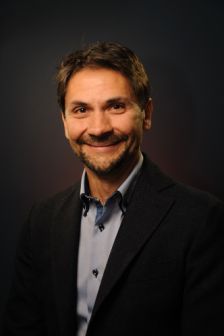
Bio: Federico Centola received his Laurea degree in electrical engineering from the University of L'Aquila, Italy and the M.S. degree in electrical engineering in 2003 from the Missouri Science and Technology University. After his graduation he has worked for 5 years as Senior Application Engineer and Associate Line of Business Manager for Flomerics, a company that specialized in Electromagnetic numerical simulations using the 3D Transmission Line Matrix method. For 9 years he has been an EM Technologist at Apple. In the technology group, he developed design methodologies and tools for the Apple EMC and EM Design groups. He worked on iPhones, iPads, Apple Watches and different iMac products. Since 2017, he has joined the Platform group at Google where he works as a Lead EMC Designer. Federico Centola has authored or co-authored a number of papers and patents. Numerous times he has been an invited speaker at IEEE conferences and he has been serving for many year as reviewer for the IEEE Transaction on EMC.
February 05, 2019: Advances in Automotive Design and Test for EMC and Wireless Applications
Abstract:
"Two Common PCB Layout Errors that Cause Automotive Products to Fail to Meet EMC Requirements " Todd Hubing
It is possible to design and build automotive components and systems that consistently meet their EMC requirements on the first test pass. In fact, this is the norm at several automotive companies. Nevertheless, many automotive products do not meet all of their EMC requirements on the first test pass. Patching and tweaking these designs to be compliant can result in products that are less robust and more expensive than they need to be. Automotive products that fail to meet their EMC requirements generally fall into two categories: products with poorly laid-out boards and products with well laid-out boards that have one or two critical errors. This presentation describes two common PCB layout errors that, in the author’s experience, are most likely to cause an otherwise good automotive design to fail to meet its EMC requirements." EMC and Wireless Test and Measurement: Challenges and Solutions for Connected Vehicles " Garth D’Abreu
In the rapidly evolving industry of autonomous, electric and hybrid vehicles, the ability to successfully provide vehicle level antenna pattern measurements as well as EMC measurements to verify the performance of Advanced Driver Assistance Systems (ADAS) will be key to the future of this market and address public safety concerns. The automotive trends in wireless capabilities for high data streaming, incident detection warning, anti-collision/adaptive cruise control radar, wireless entry and vehicle-to-vehicle (V2V), vehicle-to-infrastructure (V2I) and vehicle-to-cloud (V2C) communication are just a few of the features impacting the functionality of today’s modern vehicles. This presentation details the challenges presented by these market demands and how innovative testing solutions help drive the technologies forward to real-life applications.
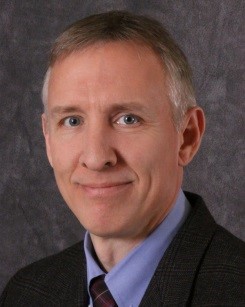
Bio: Dr. Todd Hubing is a Professor Emeritus of Electrical and Computer Engineering at Clemson University and President of LearnEMC. LearnEMC provides EMC instruction, consulting and design assistance to engineers working in the automotive, aerospace and consumer electronics industries. Dr. Hubing holds a BSEE degree from MIT, an MSEE degree from Purdue University and a Ph.D. from North Carolina State University. He was an engineer at IBM for 7 years and a faculty member at the University of Missouri-Rolla for 17 years before joining Clemson University in 2006. As the Michelin Professor of Vehicle Electronics at Clemson, he directed research in the Clemson Vehicular Electronics Laboratory and taught classes in vehicle electronics, electromagnetic compatibility and digital signal integrity. Dr. Hubing has authored or co-authored over 200 papers and presentations on electromagnetic modeling, electromagnetic compatibility and the design of reliable electronic systems. He is a Fellow of the Institute of Electrical and Electronics Engineers (IEEE), a Fellow of the Applied Computational Electromagnetics Society, and a Past-President of the IEEE Electromagnetic Compatibility Society.

Bio: Mr. Garth D’Abreu is the Director, Automotive Solutions at ETS-Lindgren based at the corporate headquarters office in Cedar Park, Texas. He has primary responsibility for the design and development functions worldwide within the Systems Engineering group, specializing in turnkey solutions for Automotive EMC and Wireless test integration. Some of these more complex full vehicle and electronic sub-assembly (ESA) test chambers involve his coordination with the RF engineering team on custom components, and the certified, internal Building Information Modeling (BIM) team at ETS-Lindgren. Due to his considerable industry experience, he is the ETS-Lindgren global subject matter expert responsible for the ongoing research and development of Automotive EMC/Wireless test chambers for Regular, Autonomous, Electric and Hybrid Electric Vehicles, focusing on combination anechoic chambers, reverberation chambers, GTEM cells, EMP protection applications and wireless device (antenna measurement) test systems. Mr. D’Abreu is a member of the IEEE EMC Society and active participant in standards development, including the SAE, ISO and CISPR D automotive EMC standards, with over 25 years of experience in the RF industry. He holds a BSc degree in Electronics & Communications Engineering, from North London University, UK.
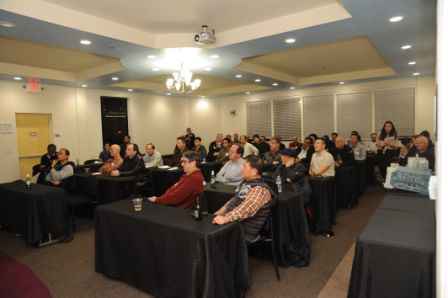
January 08, 2019: " The case for measurement and analysis of ESD fields in semi-conductor manufacturing" Timothy Maloney
Abstract: A destructive Charged Device Model electrostatic discharge event can happen in semiconductor manufacturing and should be detectable from radiation that results from collapse of an electric dipole. The analytically describable radiation field pulse of CDM can be readily produced with a new instrument (CDM Event Simulator or CDMES) that creates dipole collapse at will. A coaxial monopole E-field antenna’s transfer function gives the antenna signal in near-field, and experiments compare well with theory. These and other instruments for CDM ESD monitoring and process control are described in a newly-issued patent, reviewed here.

Bio: Timothy J. Maloney received an S.B. degree in physics from the Massachusetts Institute of Technology in 1971, an M.S. in physics from Cornell University in 1973, and a Ph.D. in electrical engineering from Cornell in 1976, where he was a National Science Foundation Fellow. He was a Postdoctoral Associate at Cornell until 1977, when he joined the Central Research Laboratory of Varian Associates, Palo Alto, CA. At Varian until 1984, he worked on III-V semiconductor photocathodes, solar cells and microwave devices, as well as silicon molecular beam epitaxy and MOS process technology. Since 1984 he was with Intel Corp., Santa Clara, CA, where he was concerned with integrated circuit electrostatic discharge (ESD) protection, CMOS latchup testing, fab process reliability, signal integrity, system ESD testing, and design and testing of standard IC layouts. He was a Senior Principal Engineer at Intel from 1999 until retirement in June of 2016. He received the Intel Achievement Award for his patented ESD protection devices, which have achieved breakthrough ESD performance enhancements for a wide variety of Intel products. He now holds forty patents. Dr. Maloney received Best Paper/Outstanding Paper Awards for his contributions to the EOS/ESD Symposium in 1986, 1990, and 2015, was General Chairman for the 1992 EOS/ESD Symposium, and received the ESD Association's Outstanding Contributions Award in 1995. He has taught short courses at UCLA, University of Wisconsin, and UC Berkeley. He is co-author of a book, "Basic ESD and I/O Design" (Wiley, 1998), and is a Fellow of the IEEE. Dr. Maloney’s ESD publication web site can be found at this location.